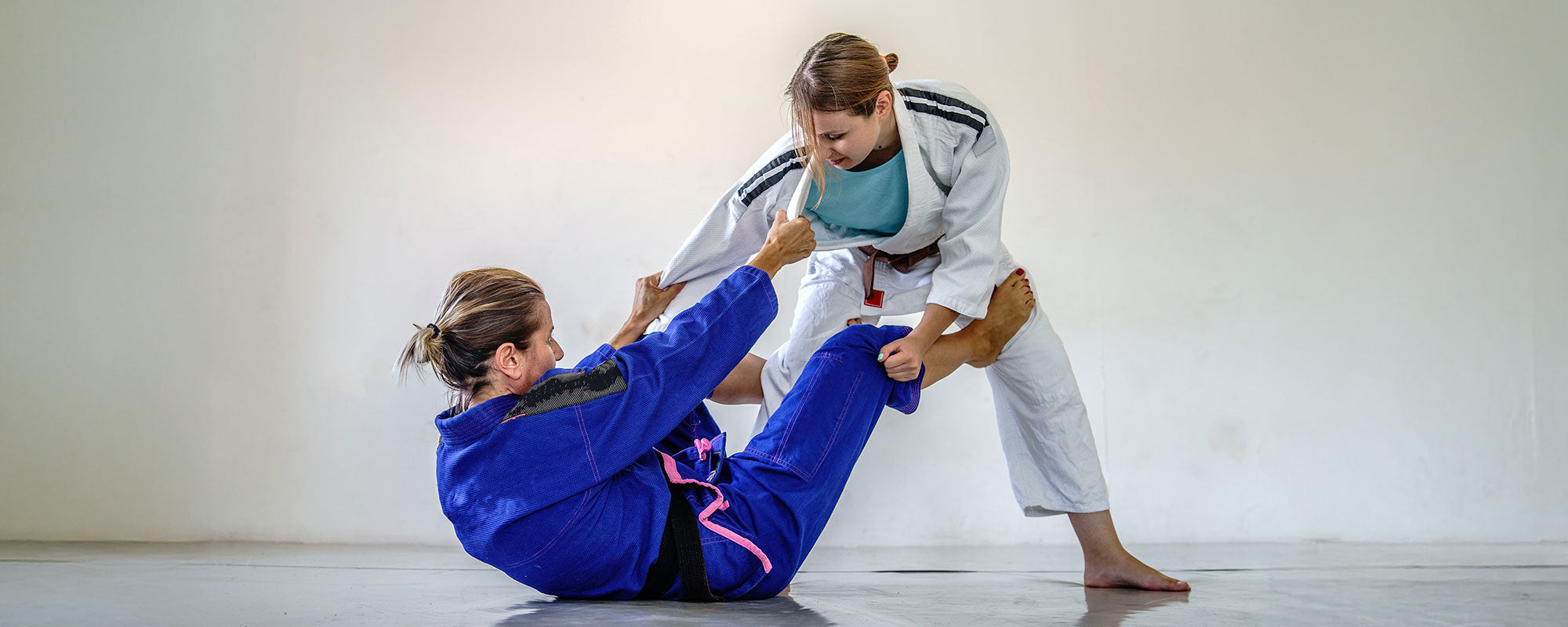Table of content
1. Overview
The question of how many times a person should train their biceps each week is frequently debated, especially when the goal is to gain maximum size and strength.
The truth is that there is no one-size-fits-all solution. Depending on your goals and requirements, you can train your biceps from two to six times a week.
This article will explain how many times you should work your biceps in a week based on different factors and why proper recovery time is important.
Also read: What is the Correct Way to Do Calf Raises?
2. How often should you train your biceps in a week?
Ideally, it is advised to work your biceps at least two to three times per week.
But the number of days you should train your biceps depends on what you want to achieve (strength or size) and the time frame in which you want to achieve it. (longer or shorter time period).
When considering how much training or how frequent training is enough to achieve strong and toned arms, many fitness enthusiasts undermine the importance of how many sets they are performing each day. Determining the effectiveness or adequacy of a particular number of bicep training days gets down to the total number of reps and sets of arm exercises you perform in a week. Moreover, the bicep training frequency is also dependent on the recovery period.
2.1. For Muscle Endurance and Stamina
For functional fitness and greater endurance, you can safely follow the 2-6 times a week rule. However, the more days you train, the fewer sets you should perform each day. If you train three non-consecutive days in a week, you can perform 3-4 bicep workouts with at least 5 sets or a maximum number of sets you can perform easily; however, if you train five days each week, it is best to reduce the number of sets down to two.
2.2. For Bicep Growth or Size
For bicep size, It's not about how many days you train your biceps per week, it's about how much volume (too much, too little, just right) you train them over time.
- According to a study published in a male physique, training your biceps even once a week can lead to muscle growth.
Another study in 2016 by Brad Schoenfeld revealed that training biceps more than once each week was more effective in enhancing muscular growth. Working biceps two to three times per week resulted in roughly twice the muscle growth compared to baseline (3.7 percent vs. 6.8 percent).
2.3. For Bicep Strength
For bicep strength, it’s about how much weight you are trying to lift. If you are lifting heavy weights, you should train your biceps for three non-consecutive days per week to build enough muscle strength.
3. How to Decide Bicep Training Frequency per Week?
The frequency at which you should train your biceps depends on the following factors:
3.1. Overall Volume of Your Training
- Start by calculating your overall weekly training volume (work sets per week) and plan your workout plan accordingly.
- Training volume is critical in deciding how many times you should work your biceps in a week. If the total weekly training volume is more, you can break it up into smaller sessions so that your biceps are exerted evenly throughout the week.
- The Minimum Effective Volume (MEV) for biceps requires you to perform at least eight sets of direct bicep workouts per week.
- It means that you need to complete eight sets of biceps throughout the week. You can do this either by training twice a week with four sets per session or by training four times a week with two sets per session.
3.2. Your Availability for Training
- Another important factor in deciding bicep training days is your availability. You can create your own schedule based on your daily routine.
- For instance, if you’re available to exercise daily, you can break your weekly bicep training into seven days.
- If you can only spare time for two to three days per week, then you can figure out your bicep workout routine accordingly.
3.3. Your Recovering Ability
Training too little or too often will result in little bicep growth. This is because excessive training will not allow your arms to recover and rebuild. Therefore, you must give yourself enough time to recover in between your bicep workouts.
Generally, a 24-48 hour resting period is sufficient to avoid any injury. In case you’re using heavy weights, make sure to rest at least for two consecutive days.
4. Why is the Recovery Period Important?
From no-equipment body weight exercises to equipment-based workouts, many effective workouts can train your biceps for greater muscle mass, fat loss stimulation, and toned arms. Therefore, workout frequency, training accessories , and equipment, body weight, no. of sets and reps, all are tools that help make your bicep training sessions effective and allow you to achieve your bicep fitness goals. And no, training arms everyday is not the only effective workout regimen to achieve those toned arms of muscle peaks.
When it comes to effective bicep exercises, the options are nearly endless; however, according to Jeff Cavalierre, a highly qualified professional physical therapist personal trainer, and professional athlete trainer, any fitness enthusiast looking to build strong and bulging bicep muscles should focus on performing a variation of a bicep curl and a pull-up bar. In the video above, Jeff explains that other bicep exercises must also be added to the routine; however, any athlete or a fitness fanatic looking to get stronger muscles faster and by doing only a bare minimum should adopt a combination of bicep curl and pull-up workouts as their go-to effective exercises.
On the other hand, women looking to achieve toned arms need to refrain from performing heavy bicep curls and pull-up workouts for arm muscle toning because for toned arms highly intense workouts will not give the desired results. Instead, a five-minute effective workout involving different exercises is all you need for strong lean muscles. Adding dumbbells to the workout can help you achieve your goals faster. How heavy a dumbbell should be depends on your fitness and endurance levels. If you are just starting, it is best to start light. It is important to realize that toned arms can only be achieved if all the muscle groups in the arms, including the bicep, tricep, forearm muscles, and even shoulder muscles are trained. Once you develop enough stamina and functional strength, you can increase the intensity and effectiveness of this toned arms exercise routine by performing 2-3 rounds of this in one go.
5. How Often Should I Stretch My Bicep Muscles?
When it comes to bicep training or arm toning, the importance of stretching bicep muscles is often overlooked. To maximize bicep muscle training gains, stretching these muscles is of the utmost importance. When considering how often one should train biceps in a week, it is also of significance to ask the same question for bicep stretching. The biceps are one of the major postural muscles that tend to shorten during the day. If you pay attention to your activities throughout the day, you will realize that your biceps remain in the flex position for the most part of the day. Stretching the biceps before the workout can help increase the range of motion, making your workouts more effective. On the other hand, stretching them after a workout can help them relax and aid the recovery process.
The best way to stretch your bicep is to pronate the forearm and turn your hand down, straighten your elbow, and while keeping your arm extended in this way, reach back behind you and grab something to extend your arm fully behind your body. You will feel your triceps contract, and you can also contact them by moving your body slightly away from the extended arm to achieve tricep contraction.
6. How Often Should I Roll My Biceps?
Rolling bicep muscles is also of key importance when determining how often one should train their bicep muscles. Sore muscles hinder one's athletic performance and make it difficult to keep up with one's weekly bicep training schedule. Therefore, it is important to incorporate bicep rolling in your weekly gym routine to facilitate myofascial release and speed up muscle recovery process. Bicep rollers are readily available in the form of foam rollers that help release pressure, prevent muscle knots, and improve blood supply to muscles to reduce inflammation and aid in muscle function.
According to Jeff Brannigan, program director and co-founder of Stretch*d, a stretching and recovery studio in New York:
“When a muscle becomes extremely fatigued, overworked, or injured, it will become tense, and the blood flow can be compromised. Getting blood into the area will help reduce inflammation and allow it to function more properly. If a muscle is too tight, it won’t be able to contract and produce movement in the way that it is meant to. Using a muscle roller consistently will allow you to stay active and pain-free.”
Jeff Brannigan’s statement leads to the conclusion that muscle rolling should be done everyday to improve blood flow to the muscles and is not conditioned to the frequency and intensity of workouts.
7. Why is the Recovery Period Important?
Some people may overwork their biceps in a desire to develop these muscles quickly. But this approach can do more harm than good as it does not give your muscles enough time to repair themselves.
If you don’t rest properly, your muscles will not heal from the previous strain. Consequently, more workouts will create further injuries to the already damaged tissues.
So make sure you're getting the most out of your recovery and staying within your weekly training volume (work sets per week).
As discussed earlier, stretching and rolling bicep muscles can help with recovery and ensure that you train your biceps consistently. Additionally, gym enthusiasts can use compression sleeves and massage techniques to help muscles recover after every workout. In the beginning, if you perform lightweight low-impact exercises, your bicep muscles will recover within 24 hours. However, more intense and challenging bicep workouts lead to muscle fatigue of a greater degree that can last for up to 2-3 days. Therefore, the frequency and duration of bicep training should be in agreement with the recovery time. Once your muscles adapt to your existing training routine, only then increase the frequency or intensity to challenge them more and train them to adapt to this new regimen.
7.1. Different Categories of Bicep Muscle Recovery
If we contemplate the objectives of muscle recovery from a physiological aspect, during the recovery period, muscles develop a memory of the stressors to which they were subjected, leading to stress adaptation. Additionally, they replenish glycogen reserves and get time to heal the repair tissues. As a result, muscle recovery is classified into two different categories: short-term and long-term recovery.
According to a publication by Michigan State University, short-term recovery is the most common form and occurs within hours after a moderately stressful event such as a light workout. This recovery phase includes stretching, light exercise, and cool-down sessions during and after the workout. On the other hand, long-term recovery periods are included in a seasonal training schedule and may include days or weeks incorporated into an annual athletic program.
Based on this information, one can conclude that those performing bicep exercises at home or doing bicep training in the gyms, only need sleep, some stretching, and light exercises to recover. Unless one is a professional wrestler or athlete and is involved in highly grueling bicep training and weight-lifting sessions, a long-term recovery period is not needed. Therefore, taking a 12-24 hour break between light bicep workouts and a 48-72 hour break between two intense bicep workouts will be sufficient for your arm muscles to recover fully.
For additional support during training and recovery periods, using kinesiology tapes on your biceps can also help with pain, inflammation, and swelling. Moreover, suppose you feel sore after a workout and find it difficult to go about the day and perform different activities such as working on a computer, lifting heavy groceries, or moving furniture. In that case, kinesiology tape will provide postural support and facilitate muscle activation despite soreness. However, the effectiveness and advantages of using a kinesiology tape on biceps can vary among individuals and it is advisable to consult with your healthcare provider for guidance.
8. Bicep Weekly Training Frequency for Beginner level
If you’re a beginner who has just started training biceps, you first need to work on your base before jumping to a higher frequency.
Hence, training your biceps twice a week will be more beneficial at the start.
| Bicep Training Frequency per week | Sets Per Week |
|---|---|
| 2 to 3 days (Based on total Training Volume) |
8 to 12 |
9. Bicep Weekly Training Frequency for Intermediate and Advanced level
| Bicep Training Frequency per week | Sets Per Week |
|---|---|
| 2 to 3 days or More (Based on total Training Volume) |
10 to 14 |
It is recommended that intermediate lifters should do 12-20 total training sets per week.
The weights used to exercise the biceps can vary, but heavy weights (less than 8 reps) should be avoided because they might cause damage. Throughout a training routine, a mixture of moderate (8-15) and higher rep (20-30) exercises should be completed .
10. Frequently Asked Questions:
10.1. Is it alright to work biceps every day?
Working biceps every day is usually not recommended. This is because your biceps will lose their power and strength if exerted excessively.
Hence, you must take some time off to allow your biceps to recover following an exercise. After a proper resting period of 36-48 hours, your muscles will actually grow stronger due to supercompensation, enabling you to do more strenuous workouts.
10.2. Can I train my biceps every two days if my bicep is lagging?
Yes, it is alright to work your biceps every two days because this is enough time to give your muscles to properly rest.
In fact, it’s more important to focus on the number of sets, repetitions, exercises, and intensity rather than on the frequency of exercises in a particular week.
10.3. Is it enough to do two biceps exercises per week?
It may be enough in the beginning but it is best to perform at least three exercises per week that vary in movements. For example, a mixed set of standing curls, incline curls, and preacher curls will be more beneficial.
10.4. Is it a good idea to train your biceps just before your back workout?
No, training biceps before a back workout is not a smart idea since the back is a pull activity that incorporates the biceps and forearms. If you train your biceps before a back session, your biceps will already be sore, resulting in a deficient and weak workout.













Leave a comment
This site is protected by hCaptcha and the hCaptcha Privacy Policy and Terms of Service apply.